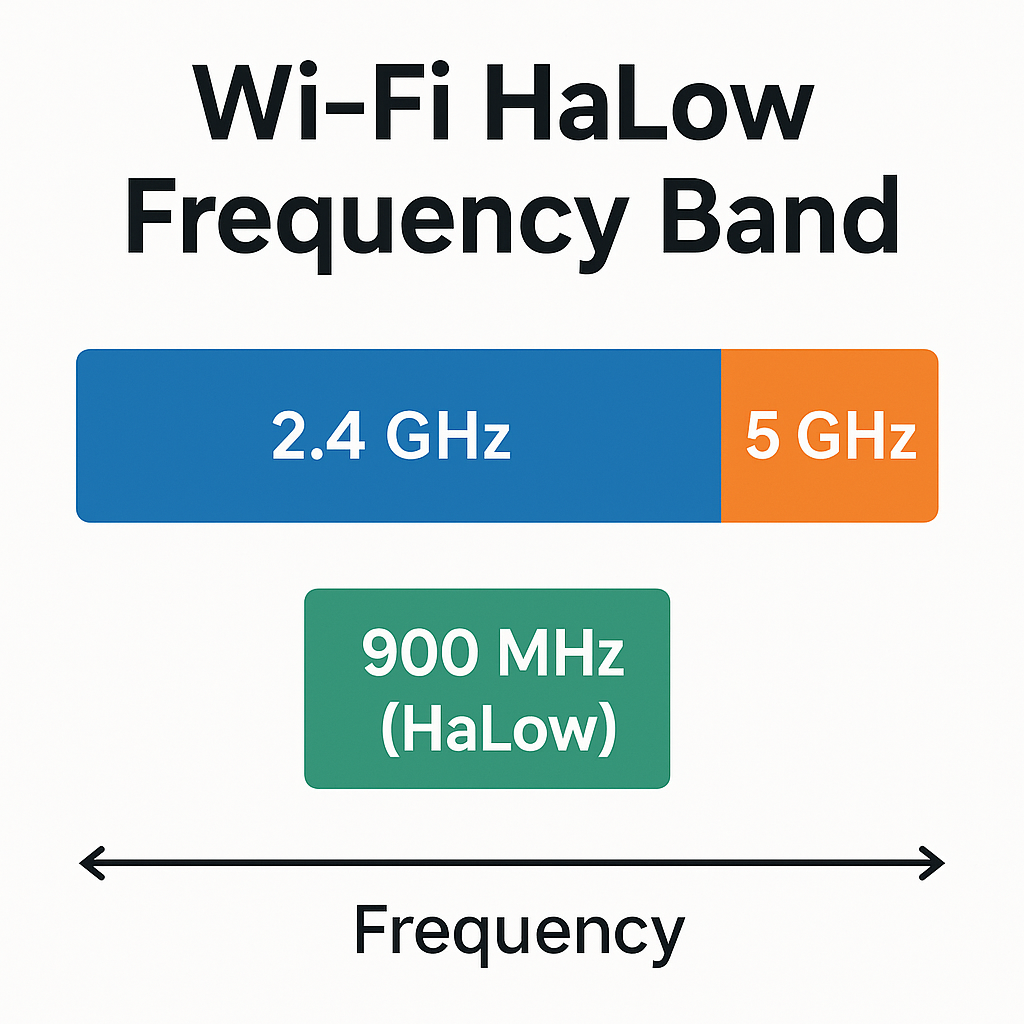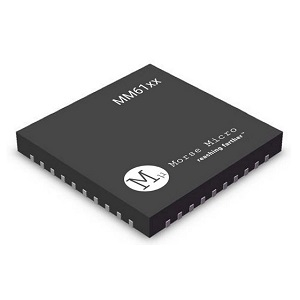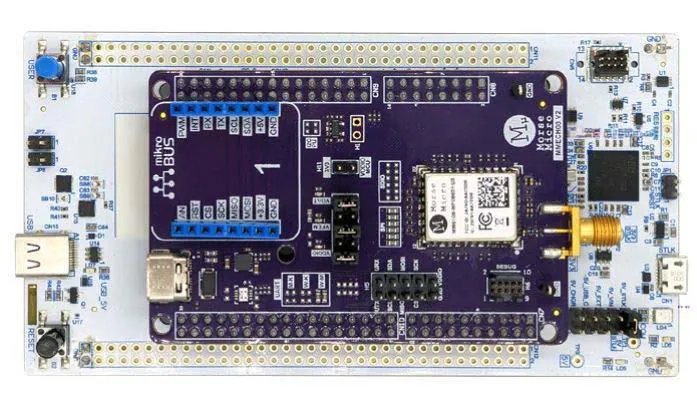Wi-Fi HaLow is finally hitting the market—and it might reshape how we build long-range, low-power IoT networks. But where does that leave the trusty ESP32? Is HaLow a LoRa killer, or just another “smart fridge” protocol? In this article, we’ll break down what Wi-Fi HaLow is, how it stacks up against LoRa, ESP-NOW, and classic Wi-Fi, and whether makers should care—yet.
What Is Wi-Fi HaLow?
Wi-Fi HaLow is the marketing name for IEEE 802.11ah, a Wi-Fi standard built specifically for low-power, long-range IoT devices. Unlike regular 2.4GHz or 5GHz Wi-Fi, HaLow operates in the sub-1 GHz band (usually around 900 MHz), which gives it a few key advantages for IoT:
- Longer range (up to 1 kilometer in open areas)
- Better wall and obstacle penetration
- Lower power consumption than traditional Wi-Fi
- Supports thousands of devices on a single access point

In short, HaLow is trying to do what LoRa and Zigbee already do—but with the added bonus of being Wi-Fi-compatible. That means IP networking, direct internet access, and WPA3 security—without needing a proprietary gateway.
Wi-Fi HaLow vs LoRa vs ESP-NOW vs Classic Wi-Fi
If you’ve been using ESP32 boards for a while, you’re probably familiar with options like LoRa, ESP-NOW, and classic Wi-Fi. Here’s how Wi-Fi HaLow compares:
| Protocol | Range | Power Usage | Speed | IP Support | Mesh Capable | Notes |
|---|---|---|---|---|---|---|
| Wi-Fi HaLow | Up to 1 km+ | Low | ~10 Mbps | Yes | Not native | New, promising, Wi-Fi compatible |
| LoRa | 2–15 km | Ultra low | ~0.3–50 kbps | No (via gateway) | Yes (via LoRaWAN) | Ideal for rural, low-bandwidth sensor networks |
| ESP-NOW | ~100–250 m | Very low | ~2 Mbps | No | Limited | Peer-to-peer, great for ESP32-only setups |
| Classic Wi-Fi | ~30–100 m | High | Up to 100+ Mbps | Yes | No | Easy to use, but battery-hungry |
When to Use Each:
- Use LoRa when you need ultra-long range and minimal bandwidth
- Use ESP-NOW for quick, low-power ESP32-to-ESP32 comms without routers
- Use Classic Wi-Fi when speed and cloud access matter more than battery life
- Wi-Fi HaLow? It could be a “best of both worlds” option… once it’s more widely available
Can You Use Wi-Fi HaLow With ESP32?
Right now, the short answer is: not yet—at least, not natively.
As of 2025, Espressif has not released an ESP32 chip with built-in Wi-Fi HaLow support. Their current lineup (ESP32, ESP32-S3, ESP32-C3, ESP32-C6, etc.) supports 2.4GHz Wi-Fi, Bluetooth, and in some cases 802.15.4 (for Thread or Zigbee), but no 802.11ah.
That said, there are ways to experiment with Wi-Fi HaLow:
1. External HaLow Modules
Companies like Newracom and Morse Micro have started releasing HaLow-compatible modules. These can be interfaced with ESP32 over SPI or UART, much like how we use LoRa radios (e.g. SX1276).
For example:


But not all are plug-and-play yet—they require low-level driver integration and usually target Linux SBCs like the Raspberry Pi.
2. What About Espressif?
There’s no public announcement yet, but Espressif has hinted in forums and developer channels that they are “watching 802.11ah closely” and may explore it if demand grows. Given their push into Matter and low-power protocols, HaLow might be on their future roadmap.
Should You Start Using HaLow in Your Projects?
If you’re a hobbyist or prototyping with ESP32 today, the honest answer is: probably not yet.
Why You Might Wait
- Module availability is still limited and often pricey
- Integration is complex—most HaLow modules are aimed at enterprise or Linux-based systems, not microcontrollers
- ESP32 doesn’t natively support it, so you’d need extra hardware and drivers
- No major libraries (like ESP-IDF or Arduino) support HaLow out of the box right now
But Keep an Eye on It If…
- You’re building long-range networks where Wi-Fi-like features (IP, security, direct cloud access) would help
- You want an alternative to LoRa that supports standard TCP/IP without gateways
- You’re designing products that need to scale to thousands of nodes over wide areas
- You’re into early adoption and don’t mind dealing with SDKs and datasheets
Key Takeaways
- Wi-Fi HaLow (802.11ah) offers long range, low power, and native IP—ideal for scalable IoT.
- ESP32 does not support HaLow natively (as of 2025), but third-party modules exist.
- HaLow isn’t a LoRa or ESP-NOW replacement yet—especially for DIY or battery-sensitive projects.
- Worth watching as more modules and chip support emerge.
At the end of the day, Wi-Fi HaLow looks promising—especially for industrial or agricultural IoT—but it’s not quite ready for typical maker projects built on ESP32. Yet.
Final Thoughts: Will Wi-Fi HaLow Replace LoRa or ESP-NOW?
Not anytime soon.
Wi-Fi HaLow offers a compelling mix of long range, low power, and native IP support—a potential game-changer for the IoT space. But for most ESP32-based maker projects today, it’s still in the “wait and see” category.
LoRa remains the go-to for ultra-long-range, battery-powered sensors in rural or hard-to-reach areas.
ESP-NOW is still the best option for fast, infrastructure-free ESP32-to-ESP32 communication—especially when simplicity and low power matter.
As for HaLow? It’s promising—but expect to see it first in industrial gear, smart city deployments, or future ESP-class silicon.
That said, it’s worth keeping an eye on. The moment Espressif drops a HaLow-enabled chip, you can bet I’ll be testing it—and breaking it down here on TinkerIoT.

